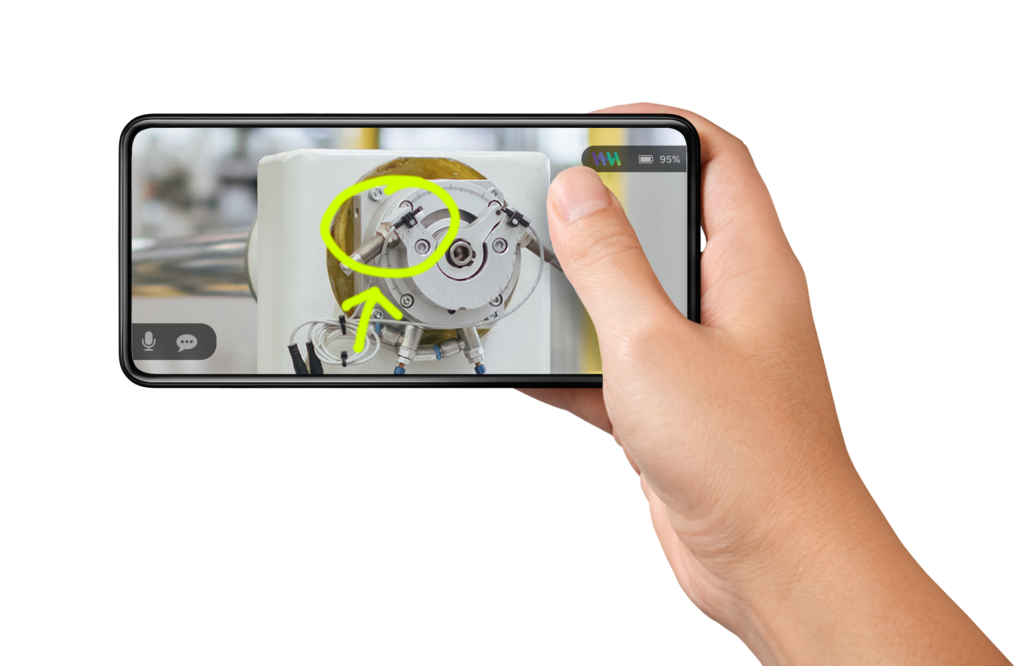

If you are relatively new to the concept of remote assistance solutions, it is a common misunderstanding to see it as a more expensive version of other remote connection solutions like FaceTime, Microsoft Teams, WhatsApp, Google Meet, and other professional video call software.
And…what’s the difference between remote support software on a mobile phone and on smart glasses?
First of all, let’s look at the differences between remote guidance and regular, mainstream video calls.
Most video call platforms like Facetime or Google Meet have Augmented Reality features that add effects or accessories to your calls. A sunny beach on the background and a funny pair of rabbit ears might be interesting for an informal video call but are less appropriate to help someone solve a technical problem or inspect a piece of equipment. With professional remote assistance, you have access to tools to better enable you at guiding the person you are talking with. If I have a malfunctioning piece of equipment, you can use the pointer to show where I need to press to open the control panel. You can also record video and take photos in order to show how to turn on one function or disable another. This is simple example highlights exactly what remote mentoring is designed for, to connect the user with an expert who can with a serious attitude.
With a regular video call, you usually want to have a conversation with your friends or family where you also can see each other. So you look at each other, even if you might turn the camera around to show your dog doing something astonishing.
However, in a remote assistance call, the purpose is to jointly look at the issue. Instead of ‘person X’ seeing ‘person Y’, with Remote eye, both parties are looking at the same reality. If I am connecting with a service technician to get help reparing a malfunctioning machine, it is much easier to collaborate if we both see a clear image of what my camera shows, versus me only seeing a miniature version up in the right corner of the screen.
‘In a remote support call, the purpose is to jointly look at the same problem, not at each other.’
In the case of person to person video calls, both parties in the conversation need to have the same software installed. This is not a big issue when you connect regularly or if both have a gmail account and decide to go for a Meet call.
In a business setting, this is a bit more complicated. As a service technician that provides support to customers, you need to connect with new people every day. For every one of these interactions you don’t want to waste time on deciding which remote video solution to use, but instead you want one that works with anyone. Which is exactly what our remote assistance solutions are built for.
With Remote eye, only the person who starts the call needs the app (or desktop application) installed. You can then share a link with the person you want to call. When the other person links to the call will through their web browser, there is no need for them to download an app or create an account: they just need to click on a link and it doesn’t matter what type of smartphone they have as long as it has a data connection and a camera.
Using professional solutions like Remote eye is just as easy as making a regular video call to enjoy a distant drink with a friend. And it is especially useful when you need to solve problems around malfunctioning equipment, or perhaps do a remote inspection as part of your preventative maintenance or sometimes train new employees on the field. But if you just need to catch up with a friend… a normal video call is just fine. Each solution has its own intended use, which it’s optimized for.
Since Wideum’s Remote eye is built with simplicity in mind, we can guarantee that you will be able to implement the software in a short amount of time, with a minimum amount of training and no necessary software integrations. Save on travel, save time and monetise your after sales service to obtain a fast return on your investment.